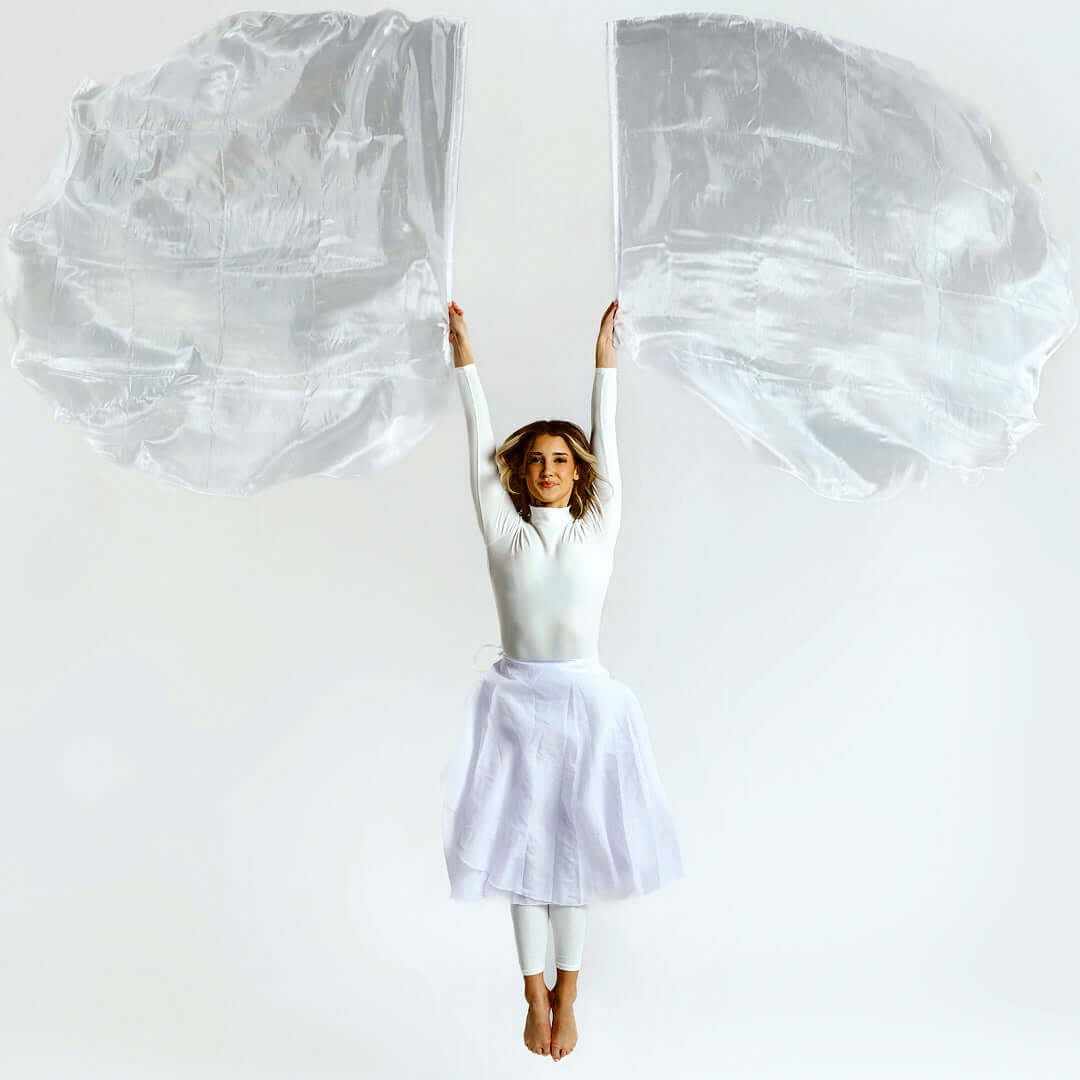We will explore the arguments for and against having worship flags at the front or the back of the church, shedding light on the significance and impact they can have on the congregation.
In our new video FAQ series' on TikTok, YouTube, and Instagram, Catch the Fire Worship Flags answers your worship flag FAQs.
Click here to watch the video, Do Worship Flags Belong at the Front of the Church? If you prefer to read, check it out below.
Today we answer the question: do worship flags belong at the front of the church?
We'll be exploring the question of where worship flags should be positioned during church services: in the front or in the back? While some churches may not embrace the use of worship flags at all, we'll address the reasons behind different placement preferences.
Why Worship Flags Should be at the Front
Let’s explore three compelling reasons why placing worship flags at the front of the church can enhance the worship experience.
Direct Communication:
By incorporating worship flags into the worship team - alongside lead singers and musicians, we can effectively communicate non-verbally. This visual display serves as a powerful tool to lead the congregation into the presence of God, helping them grasp the spiritual essence of the worship experience.
Non-Verbal Communication:
Worship flags are a form of non-verbal communication, and they need to be positioned where they can be seen. Placing them at the front ensures that their message is visible to everyone, reinforcing the worship experience and facilitating a deeper connection with God.
In 1 Chronicles 16, we see how David established the Tabernacle of David, where worshippers would continuously minister and worship before the Lord. When a church recognizes the value and significance of worship flags, it becomes essential to have worshipers positioned before the altar, directly ministering to the Lord on behalf of the congregation.
Reasons for Worship Flags in the Back
While the front may seem like the ideal location for worship flags, there are valid reasons why they might be placed at the back of the church.
Space Constraints:
One practical consideration is the availability of space. If the church has limited room near the front, it may be more feasible to position the worship flags at the back. While not ideal, it ensures their inclusion despite spatial limitations.
Worship Leader's Perspective:
The placement of worship flags may also depend on the value and priority given to them by the worship leader or church leadership. If worship flags are merely allowed but not fully embraced, they might be positioned at the back to avoid potential offense or distraction to the congregation.
Summary
Determining where to position worship flags in the church involves thoughtful consideration of various factors.
Placing them at the front allows for direct communication, non-verbal expression, and a deeper connection with God, practical constraints and the perspectives of worship leaders may lead to their placement at the back. Ultimately, the goal is to foster a worshipful atmosphere that encourages individuals to encounter God in their unique way.
We hope this post has shed light on the debate surrounding the placement of worship flags. Remember, worship is a personal and communal expression, and the positioning of worship flags should ultimately align with the church's values and the desire to create an environment conducive to encountering the divine.
When there's more understanding around worship flags, the entire assembly benefits.
In the comments, let me know if your church uses worship flags and if they have them in the front or in the back. We hope you found this answer helpful to your worship flag FAQs.
What’s Your Worship Flag FAQ?
Do you have a question you want us to cover? Leave a comment and we will make a video to answer your worship flag FAQ.











